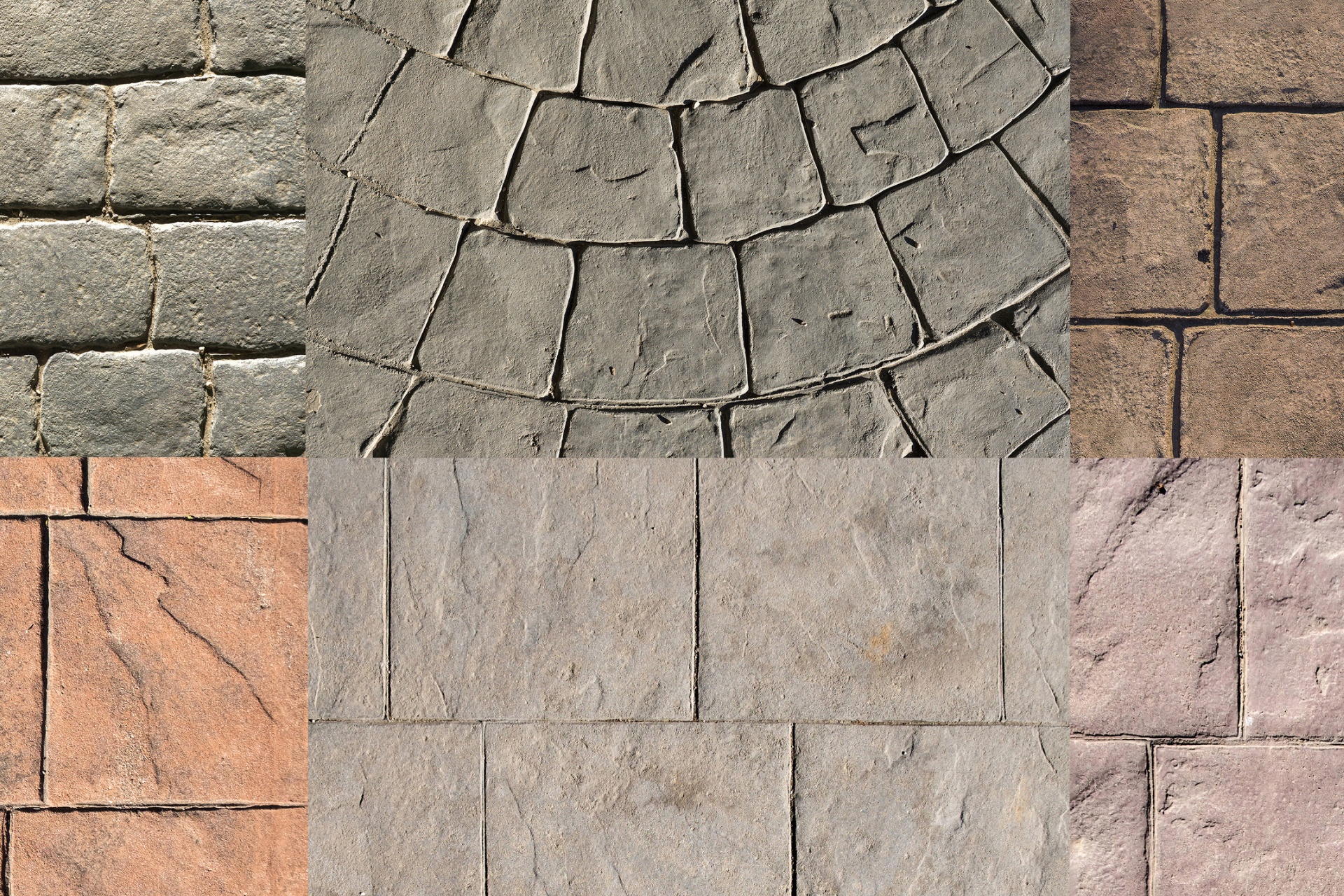Stamped concrete overlay problems often stem from poor installation techniques, including insufficient preparation and a lack of expertise.
- If the substrate isn’t properly prepared, you’ll likely face issues since surface inconsistencies and moisture content significantly affect adhesion.
- Material limitations, such as color inconsistency and susceptibility to cracking, also play a crucial role.
- Weather conditions like UV exposure and freeze-thaw cycles can also deteriorate the surface.
Understanding these complexities ensures better decision-making for your project and offers insights into ensuring its success.
Poor Installation Techniques
Without the necessary preparation and installation expertise, the outcome of a stamped concrete project can significantly suffer.
The contractor must understand the materials’ intricacies, the environmental conditions, and the precise timing needed for application and curing for the project to be successful and durable.
Without stringent quality control measures in place, the likelihood of errors during the installation process increases.
These errors can range from improper thickness of the overlay, which can lead to cracking, to uneven texture that diminishes the aesthetic appeal.
The technical skill required to install stamped concrete overlays successfully is high, and without a commitment to quality control, the end result will likely be unsatisfactory.
The end result hinges on the expertise involved in the installation process and the adherence to quality control standards.
When these elements are compromised, the integrity and beauty of stamped concrete overlays are at risk.
Inadequate Substrate Preparation
The preparation of the substrate must be precisely executed to ensure a durable and visually appealing finish.
You’re dealing with a process that demands precision; any lapse in attention to the condition of the underlying surface can lead to significant issues in the future.
Surface inconsistencies, such as cracks, uneven areas, or unlevel surfaces, must be addressed before overlay application.
Failure to do so compromises the overlay’s adhesion and affects its final appearance, potentially leading to unsightly and uneven texture.
Also, the moisture content of the substrate plays a significant role in the success of a stamped concrete overlay.
Too much moisture can prevent the overlay from bonding correctly, while too little might lead to rapid drying, causing chips, cracks, and compromised structural integrity.
Ensuring the substrate is properly prepared, with a keen eye on moisture levels and surface conditions, is non-negotiable for achieving a lasting and aesthetically pleasing stamped concrete overlay.
Ignoring this vital step invites a plethora of problems, rendering efforts futile and expectations unmet.
Material Limitations
Despite stamped concrete overlays’ numerous advantages, their performance and aesthetic outcomes are significantly influenced by the inherent limitations of the materials used.
One of the most prevalent challenges is color inconsistency.
This issue arises because the overlay material doesn’t always absorb pigments uniformly, leading to uneven hues and shades across the surface.
Such discrepancies can detract from the overall look, making the area appear patchy rather than seamless and uniform.
Cracking issues are also a significant concern with stamped concrete overlays. The rigidity of the material, combined with its susceptibility to environmental stresses, can lead to cracks forming over time.
These cracks not only mar the surface’s appearance but can also compromise the structural integrity of the overlay.
The expansion and contraction of the concrete, influenced by temperature fluctuations and moisture ingress, exacerbate these cracking issues.
Understand that while additives and reinforcing fibers can mitigate these problems to some extent, they can’t eliminate them entirely.
Therefore, when opting for stamped concrete overlays, you must weigh these material limitations against the desired aesthetic and functional outcomes.
Weather Impact
Weather conditions significantly influence the durability and appearance of stamped concrete overlays.
Exposure to the sun’s ultraviolet rays can lead to color fading, gradually diminishing the vibrancy and aesthetic appeal of your surface.
This color fading isn’t just a superficial issue; it’s a sign of the material’s degradation over time under relentless sunlight.
Additionally, stamped concrete overlays aren’t immune to the effects of freeze-thaw cycles. These cycles present a formidable challenge, especially in climates that experience severe winters.
Water penetrates the micro-cracks in the concrete, and when temperatures drop, the water freezes, expanding and exacerbating the cracks.
This repeated freeze-thaw process can cause significant damage, leading to surface deterioration and structural weakness.
Both color fading and the damage from freeze-thaw cycles highlight the material’s vulnerability to environmental conditions.
Keeping these factors in mind will help you mitigate potential problems, ensuring your investment remains both functional and visually appealing for as long as possible.
Maintenance Challenges
Maintaining stamped concrete overlays presents a complex challenge that requires meticulous attention to detail to prevent rapid deterioration and preserve their aesthetic appeal.
Cleaning isn’t straightforward due to the textured surface that easily traps dirt and debris. Regular cleaning requires specific techniques and products to avoid damaging the surface integrity.
It’s not simply a matter of hosing down; you need to use gentle, pH-neutral cleaners and soft brushes to effectively remove contaminants without etching the overlay.
Color fading represents another significant maintenance hurdle. The vibrant hues of stamped concrete overlays can gradually diminish, primarily due to UV exposure and weathering.
To counteract this, you must apply sealants with UV protection periodically.
Resealing demands an exacting application to ensure an even, protective layer that doesn’t compromise the slip resistance or finish.
Incorrect sealant application can lead to a host of issues, including cloudiness or premature peeling, further complicating maintenance efforts.
Overlooking these aspects can swiftly lead to a compromised appearance and reduced lifespan, undermining your initial investment.

